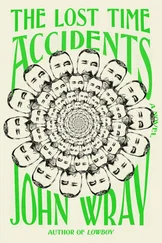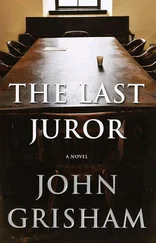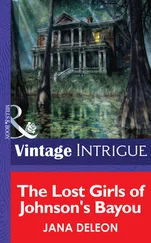John Bassett - The Lost Fruits of Waterloo
Здесь есть возможность читать онлайн «John Bassett - The Lost Fruits of Waterloo» — ознакомительный отрывок электронной книги совершенно бесплатно, а после прочтения отрывка купить полную версию. В некоторых случаях можно слушать аудио, скачать через торрент в формате fb2 и присутствует краткое содержание. Жанр: foreign_antique, foreign_prose, на английском языке. Описание произведения, (предисловие) а так же отзывы посетителей доступны на портале библиотеки ЛибКат.
- Название:The Lost Fruits of Waterloo
- Автор:
- Жанр:
- Год:неизвестен
- ISBN:нет данных
- Рейтинг книги:4 / 5. Голосов: 1
-
Избранное:Добавить в избранное
- Отзывы:
-
Ваша оценка:
- 80
- 1
- 2
- 3
- 4
- 5
The Lost Fruits of Waterloo: краткое содержание, описание и аннотация
Предлагаем к чтению аннотацию, описание, краткое содержание или предисловие (зависит от того, что написал сам автор книги «The Lost Fruits of Waterloo»). Если вы не нашли необходимую информацию о книге — напишите в комментариях, мы постараемся отыскать её.
The Lost Fruits of Waterloo — читать онлайн ознакомительный отрывок
Ниже представлен текст книги, разбитый по страницам. Система сохранения места последней прочитанной страницы, позволяет с удобством читать онлайн бесплатно книгу «The Lost Fruits of Waterloo», без необходимости каждый раз заново искать на чём Вы остановились. Поставьте закладку, и сможете в любой момент перейти на страницу, на которой закончили чтение.
Интервал:
Закладка:
CHAPTER II
EARLY ADVOCATES OF UNIVERSAL PEACE
Those who have tried to point the world to universal peace may be divided into two schools: one advocating a form of coöperation in which the final reliance is to be reason, the other looking forward to some effective form of common action behind which shall be sufficient force to carry out the measures necessary to enforce the common will. It is convenient to describe the former group as advocating a league of peace, since we are generally agreed that a league is a form of concert from which the constituent members may withdraw at will, and in which does not reside power to force them to do what they do not find reasonable. The second group wish to have a federation, if by that term we understand a united group in which exists power sufficient to preserve the common cause against any possible disobedient member. To form a league is easier than to form a federation. States are tenacious of sovereignty. The Swiss cantons, the Dutch provinces, and the original thirteen states of North America are the most striking illustrations of states that were willing to submit themselves to the more strenuous process of union. They acted under stress of great common peril, and their first steps in federation were short and timid; but none of them have regretted that the steps were taken. It was the good fortune of these groups of states that they were able to unite at the proper time and that their actions were not overclouded by the counsel of “practical statesmen” to whom ideals were things to be distrusted.
In other states in periods of great distress from war men lived who dreamed of coöperation to promote peace, but their voices were too weak for the times. The most notable early advocate of this scheme was the Duke of Sully, if we may accept the notion that he wrote the work known as the Grand Design of Henry IV. In that plan was contemplated a Christian Republic, composed of fifteen states in Europe, only three of which were to have a republican form of government. They were to give up warring among themselves and to refer to a common council, modeled on the Ionic League, all matters of interstate relation that were of importance to the “very Christian Republic.” The only war this republic was to wage was the common war to expel the Turks from Europe. It was after Henry’s death that Sully published the plan with the assertion that his former master had formed it just after the treaty of Vervins, 1598.
Whether it was the work of king or duke, no attempt was made to put it into force. In 1598 Europe was in the throes of a long and hopeless struggle for religion. Cities were destroyed, men and women were butchered, and the safety of states was threatened. The Grand Design represents the reaction of either Henry’s or Sully’s mind against such a terror. It was a thing to be desired, if it could have been attained. One of the marks of peace that it displayed was the attitude it took towards the branches of the Christian faith. Complete tolerance was to exist for the three forms, Catholicism, Lutheranism, and Calvinism. This was a kind of idealism that was then unattainable; but in the course of time it has been achieved. I should not like to say the day will not come when the other side of the scheme, interstate peace, will also cease to be too ideal for realization.
The next important suggestion of union for peace was made by William Penn in 1693 in an Essay towards the Present and Future Peace of Europe . At that time the Continent was racked with war – a result of the ambition of Louis XIV to raise France to a dominating position among the other nations – , the Palatinate had been devastated, and the will of the “Grand Monarch” was the dreaded fact in international politics. Penn realized that great sacrifices were ahead; for it was as true then as now that when a strong state rises to a position in which it can threaten universal rule, there is nothing for the other states but to combine and fight as long as they can.
Penn’s proposal was that the sovereigns of Europe should form a Great Diet in which all their disputes should be adjusted. If any state refused to submit to the judgment of the diet and appealed to arms, all the other states were to fall upon it with their armies and make it rue the course it had taken. Quaker though he was, he would have war to prevent war. His proposal made no impression on his “practical” contemporaries; but he was prepared for that. Men of his faith were used to “bearing testimony” in the expectation that “the world” would scoff. Although it was not included in the original folio edition of his works this essay remains to this day the best known thing he wrote. It is one of the most logical arguments for peace that we have.
From 1701 to 1714 was waged the War of the Spanish Succession, the last of the series of struggles in which Louis XIV wore out his kingdom in trying to make it supreme over its neighbors. It left France exhausted and miserable, and it had not realized the king’s ambition. In 1713, the year in which Louis was forced to accept the Treaty of Utrecht in token of his defeat, was published by the Abbé Castel de St. Pierre a book called Projet de Traité pour rendre la Paix Perpetuelle . Like the utterances of Sully and Penn, it was wrung out of the mind of the author by the ruin that lay around him. It differed from them in nothing but in its more abundant details. The abbé had taken many things into account, and the union of nations that he proposed was to do six important things.
1. There was to be a perpetual alliance of European rulers with a diet composed of plenipotentiary agents in which disputed points were to be settled amicably. 2. What sovereigns were to be admitted to the alliance was to be determined by the act of alliance, which was also to fix the proportion in which each should contribute to the common fund. 3. The union was to guarantee the sovereignty of the constituent states with existing boundaries, and future disputes of this nature were to be referred to the arbitration of the council. 4. States offending against the laws of the diet were to be put under the ban of Europe. 5. A state under the ban was to be coërced by the other states until it accepted the laws it had violated. 6. The council was to make such laws, on instruction from the sovereigns, as were thought necessary to the objects for which the perpetual alliance was created.
Like the two preceding plans the abbé’s scheme was too strong to be rated as a league. It does not allow us to think that a state could withdraw at pleasure from the alliance; and it gave to the council the authority to lay taxes, make laws that were binding, and punish defiant members. It is noteworthy for the large amount of power it gave to the sovereigns, since the members of the council were their agents and acted only on instructions. Under the prevalent notions of the divine right of kings no other method of selecting the members of the council would have been considered in France, Spain, or Germany. On the other hand, the abbé’s scheme was less liberal in this respect than Penn’s, which provided that the wisest and justest men in each nation should be sent to the council. It was also a part of Penn’s plan that the council should be a really deliberative body, a parliament of Europe as truly as there was in England a parliament of the realm.
We have no evidence that the arguments of the good abbé made a profound impression upon any of the sovereigns upon whose favor the scheme depended. The Treaty of Utrecht was followed by a season of peace. So deeply wounded was Europe by conflict that it had no stomach for war during a generation. It was a time of great industrial prosperity in England, France, and Prussia. Walpole, the wise guardian of peaceful society, dominated the first of these nations, Fleury, also a man of peace, was for a large part of the time the guiding hand in the second, and Frederic William I directed the development of the third with a sure sense of economy and the efficient use of resources. At the same time Austria was under the direction of Charles VI, a peaceful monarch who had too many anxieties at home to think of wars against the Christian sovereigns around him. The small struggles that occurred were without significance; and it was not until 1740, when a new generation was on the scene, that Europe again had a period of general war, precipitated by an imaginative young king who could not resist the temptation to use the excellent tool with which his father had provided him. Out of the twenty years’ struggle that now followed, no new plan arose for a system of coöperation to secure peace, but one of the great philosophers of the time made a new statement of the Abbé St. Pierre’s plan, which served as a new proposition.
Читать дальшеИнтервал:
Закладка:
Похожие книги на «The Lost Fruits of Waterloo»
Представляем Вашему вниманию похожие книги на «The Lost Fruits of Waterloo» списком для выбора. Мы отобрали схожую по названию и смыслу литературу в надежде предоставить читателям больше вариантов отыскать новые, интересные, ещё непрочитанные произведения.
Обсуждение, отзывы о книге «The Lost Fruits of Waterloo» и просто собственные мнения читателей. Оставьте ваши комментарии, напишите, что Вы думаете о произведении, его смысле или главных героях. Укажите что конкретно понравилось, а что нет, и почему Вы так считаете.












